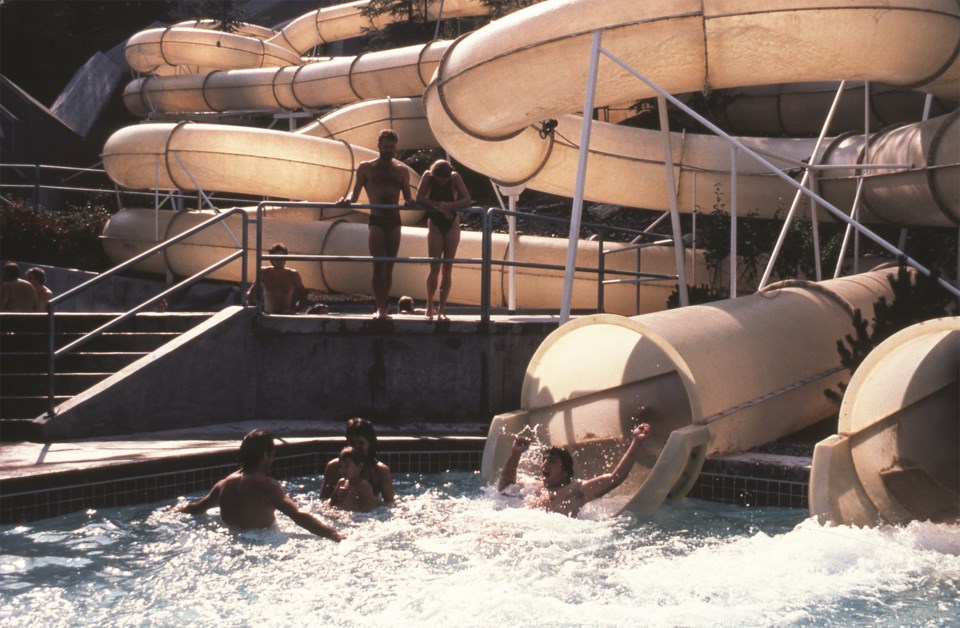By the time Whistler Springs, Whistler’s first (and so far only) waterslide facility, opened in August 1985, it had already caused quite a bit of controversy. The project was first proposed in 1983 and was expected to be completed by December of that year, but it took two years before the first riders flung themselves down the fibreglass tubes.
In the spring of 1983, Whistler Mountain Ski Corporation (WMSC) was studying the economic viability of a waterslide at the base of its north-side lifts after it was approached by a development company.
According to Dave Balfour, then the vice president of finance and administration, studying how it could be incorporated into their operations and ski runs was “an interesting design problem.” Because the site was part of the ski area, the developer Hugh Hall first needed to apply for tenure from the Ministry of Lands, Parks and Housing through WMSC in order to apply for a development permit from the municipality.
WMSC did not think this would be a problem, and by the end of the summer plans had moved ahead.
As described by Hall, the proposed facility would include a spiral staircase up to the lobby, offices, a gift shop, a juice bar, multiple spas, a heated and covered walkway, and two slides made of semi- transparent tubes.
It would be one of a small number of non-skiing family-oriented facilities in Whistler and would operate for most of the year (according to Hall, it would be closed for half of May and all of June as “everyone has to accept the fact that in any resort there are certain months of the year things aren’t open.”)
When it came time to apply for a development permit, however, there was some vocal opposition, especially from the site’s neighbours.
Kurt Gagel, president of the Telemark Strata Corporation, and Peter Gregory, the developer of the Delta Mountain Inn, expressed concern about the location and its impact on their property values due to the aesthetic of “unattractive waterslide tubes’’ and potential noise complaints.
Others expressed concerns about the visual impact of the waterslides and whether there would be adequate landscaping to make the facility blend in with its surroundings.
In September, more than 50 people attended a three-hour public meeting to discuss the development. Only about 20 people showed up to the next meeting where council was set to vote on the matter, but letters from both neighbours were read indicating possible legal action if the permit was approved. Despite this, council voted to approve the permit 4-3, but with 14 conditions attached before a building permit would be issued.
Over the next two years, changes were made to the design, and construction began on Whistler Springs in 1984. December was again proposed as an opening date, but the facility was not completed until August 1985, after another small controversy over 400 square feet of floor space that had not been in the original permit.
Whistler Springs officially opened to the public on August 23. Visitors and residents alike arrived to test out the slides and it was soon discovered that the right slide ran slightly faster than the left.
Despite what some have described as a very chilly walk up to the top, the slides became very popular with the summer ski camp kids and others. In 1987, the waterslides were even included in articles meant to advertise Whistler as a resort destination.
By the early 1990s, the popularity of the waterslides was waning and Whistler Springs closed permanently in 1991.
According to Peggy Vogler, after the slides closed the building was used by WMSC employees. The restaurant space upstairs became offices for the ski school and the downstairs was used by employee services. The site was sold to developers and eventually developed into the Westin Resort & Spa.
The only trace of the waterslides left today is the name of the Whistler Blackcomb Employee Services building, still called The Springs.




